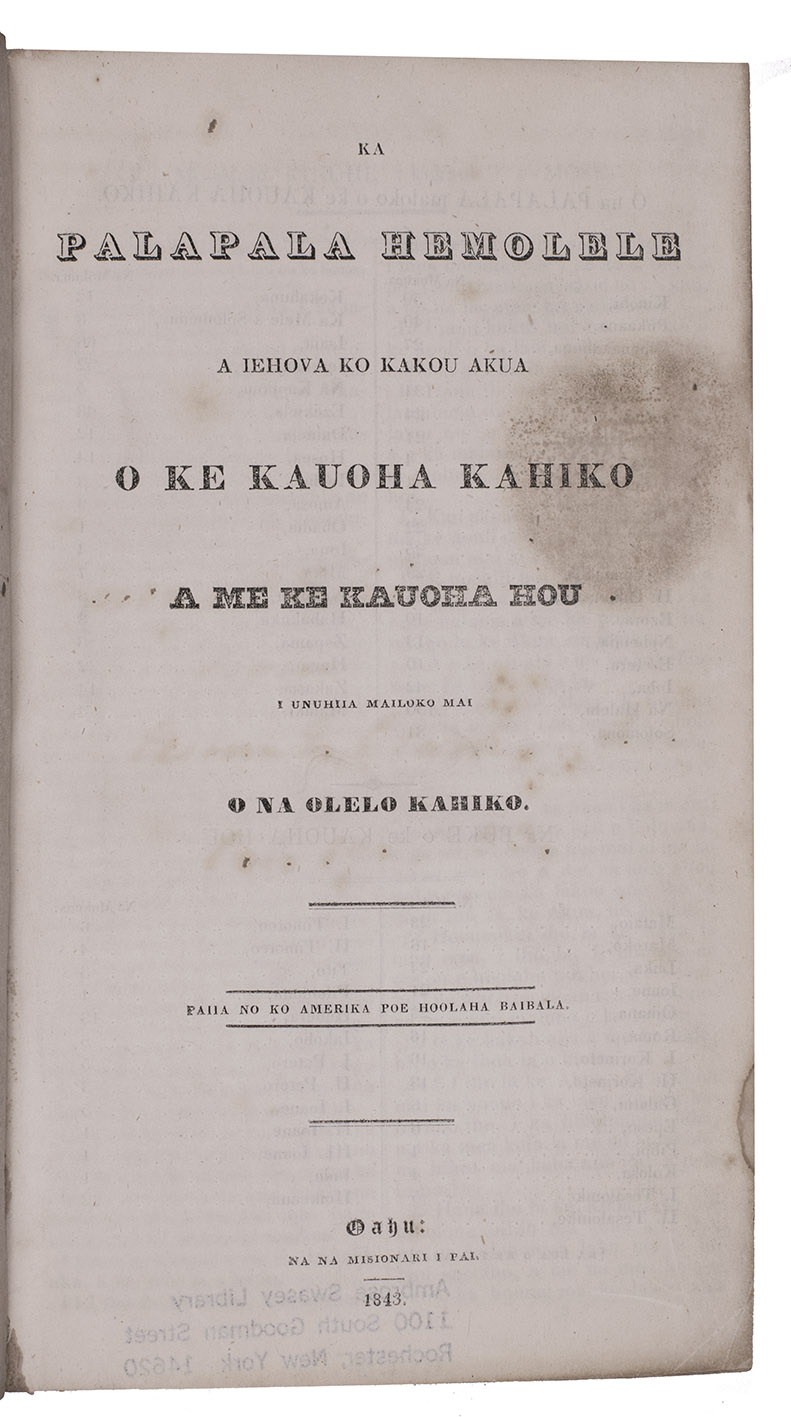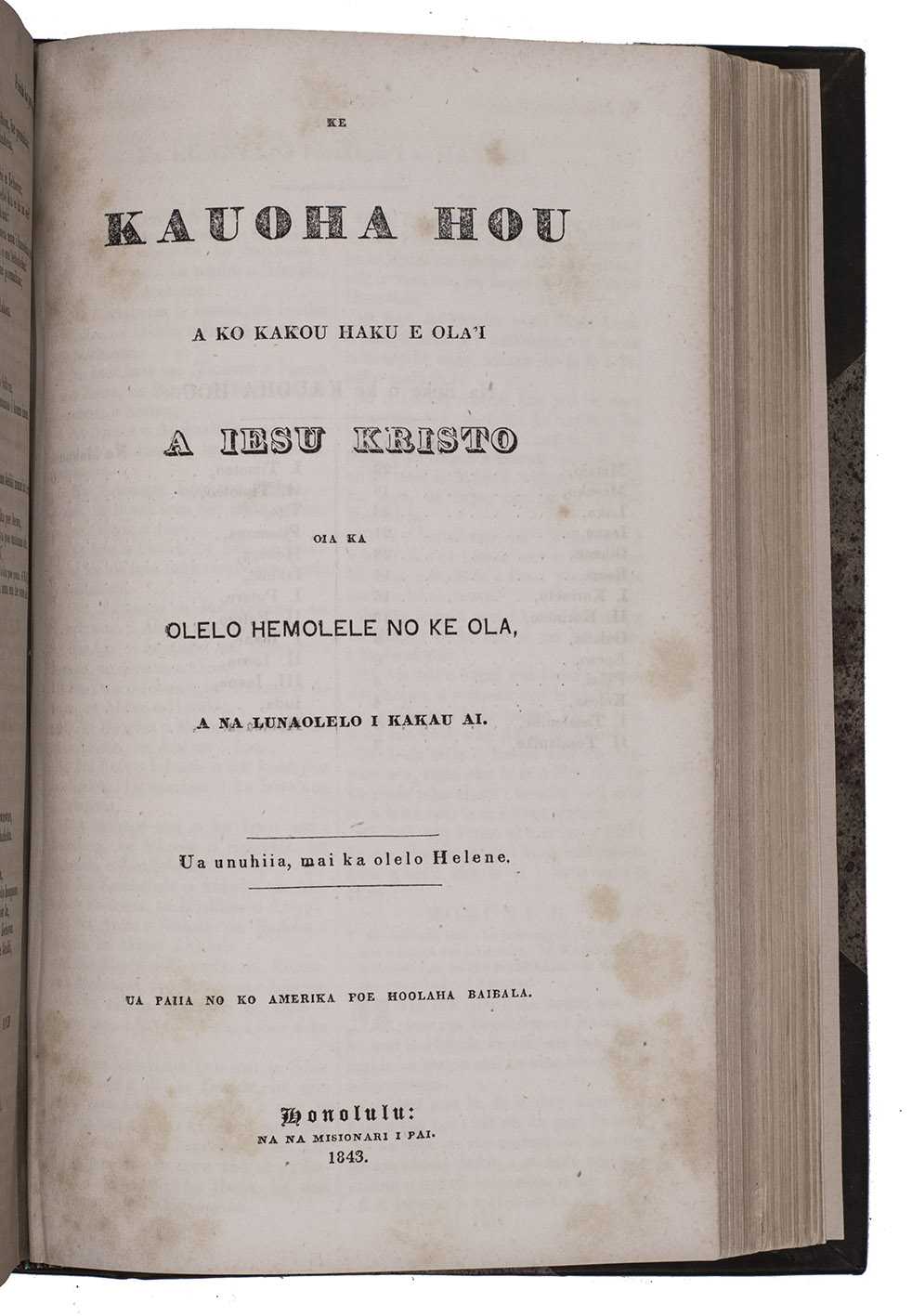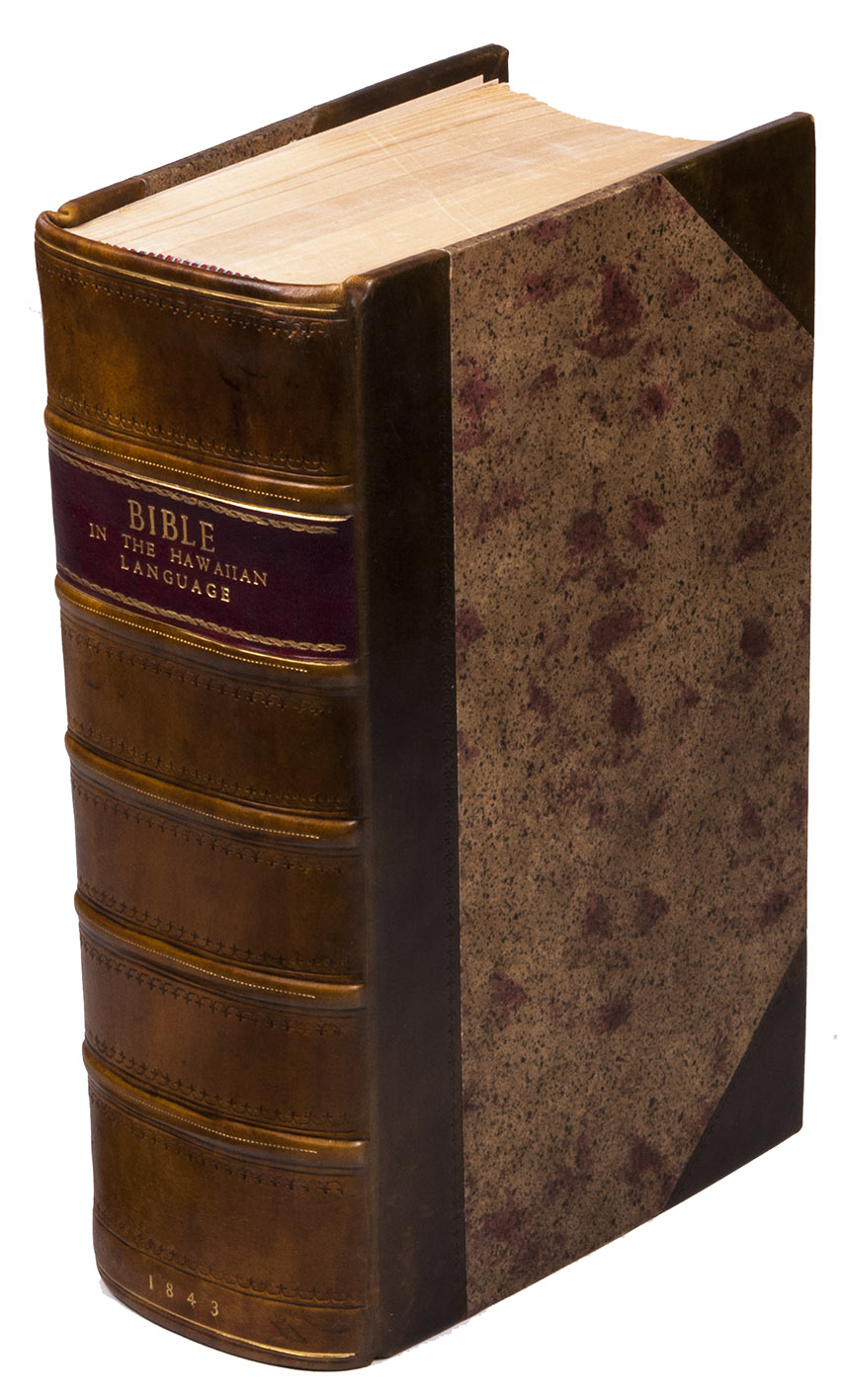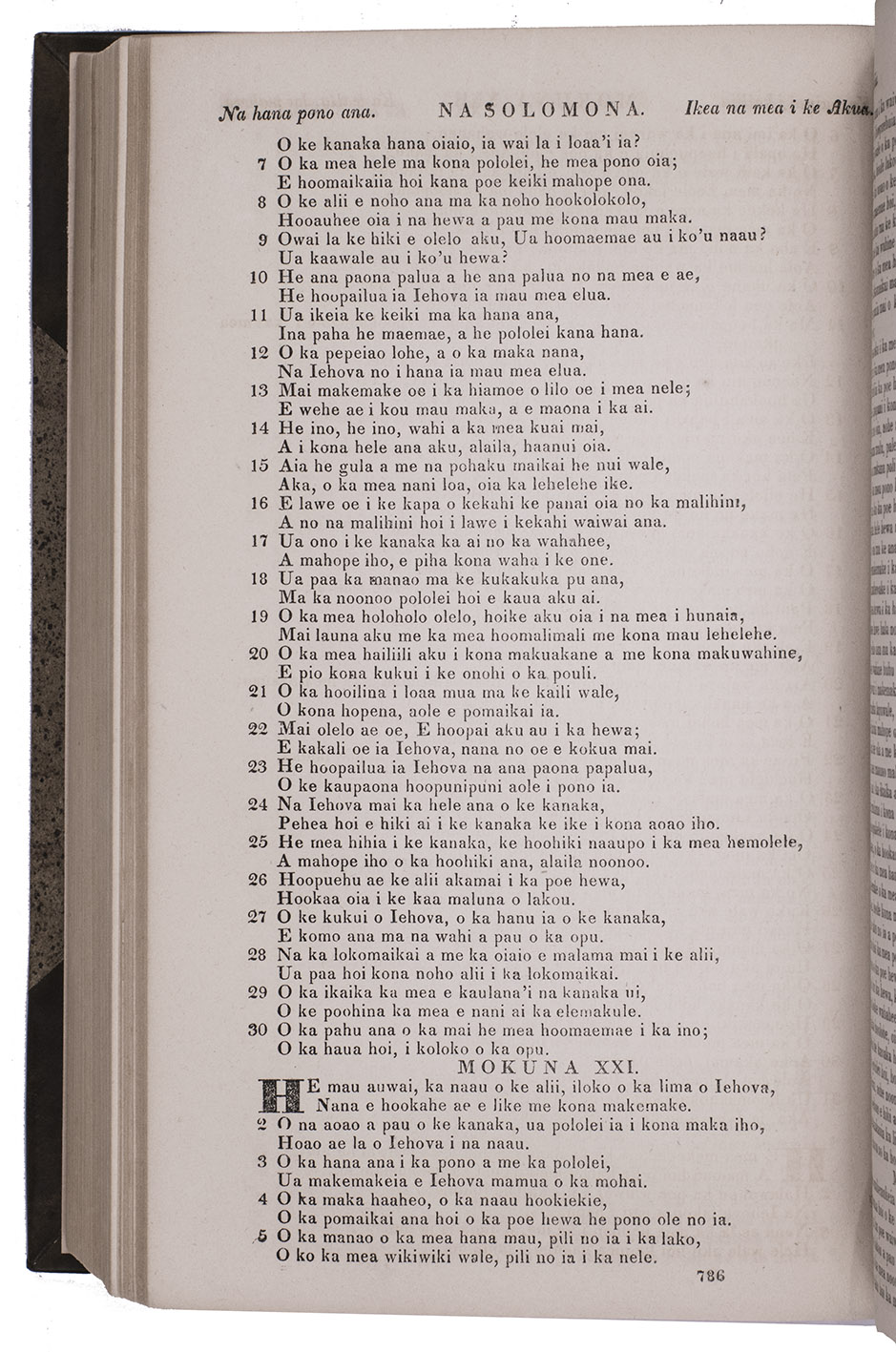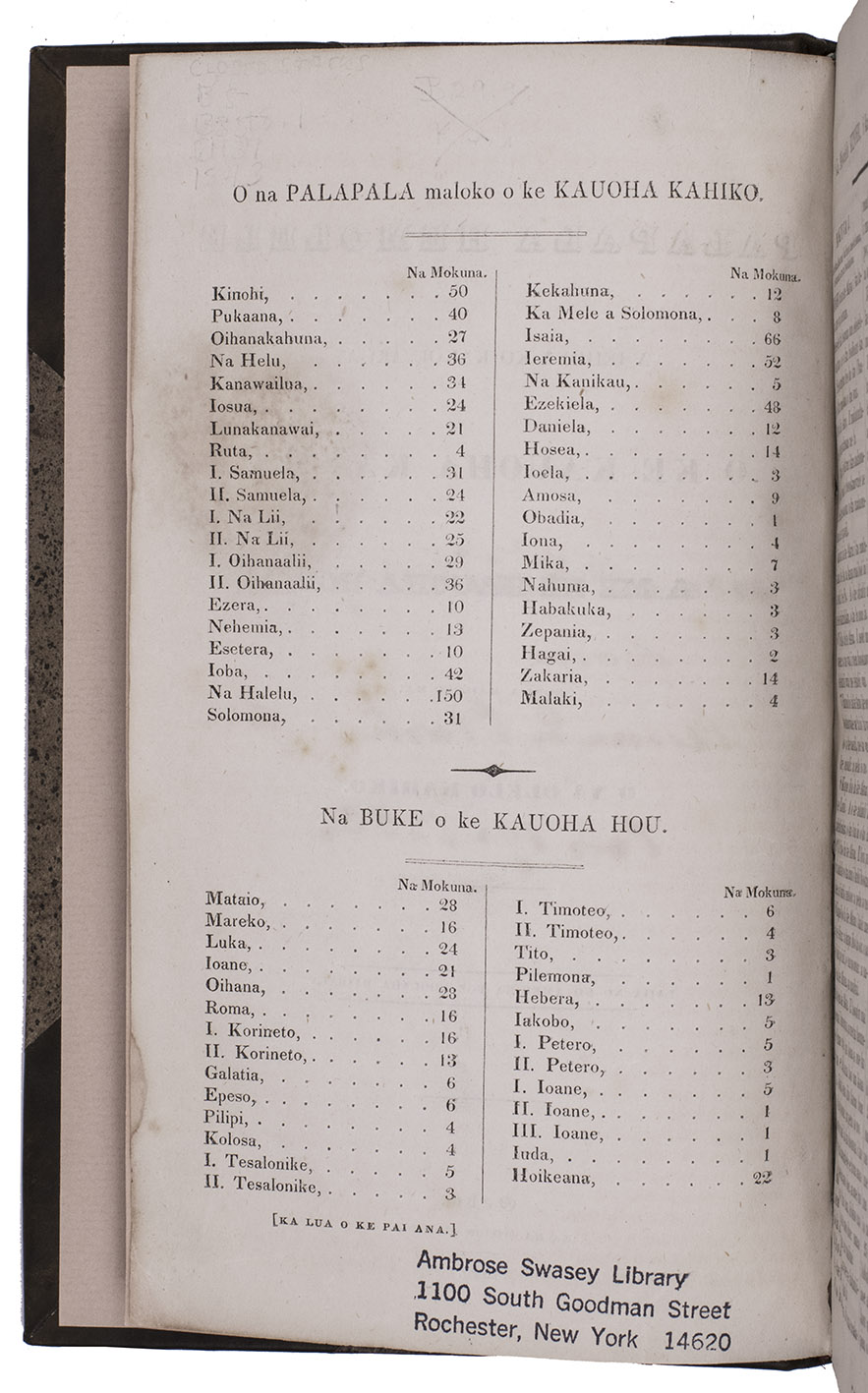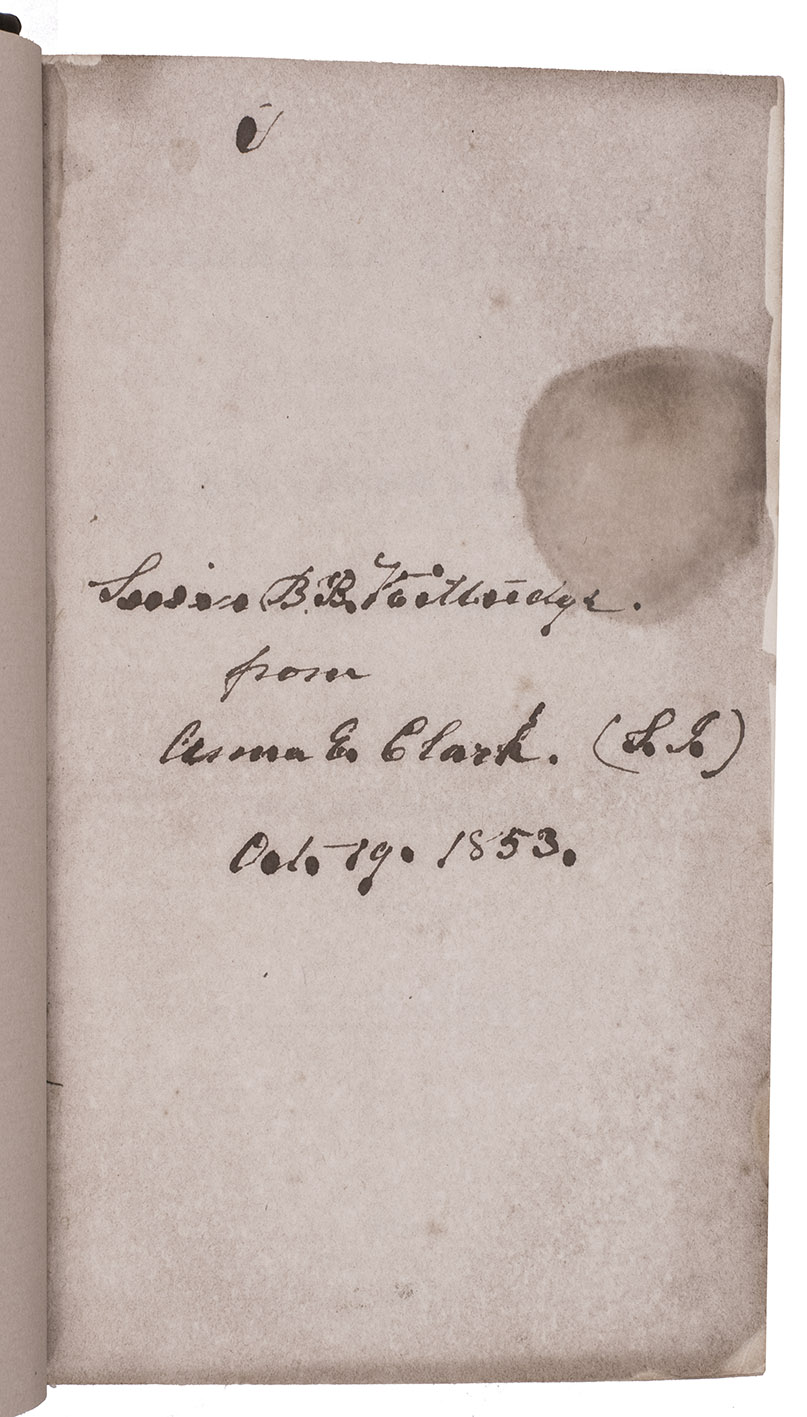[BIBLE – HAWAIIAN].
Ka Palapala Hemolele a Iehova ko kakou Akua. O Ke Kauoha Kahiko A Me Ke Kauoha Hou i unuhiia mailoko mai o na olelo kahiko ...Including: Ke kauoha hou a ko kakou haku e ola'i a Iesu Kristo oia ka olelo hemolele no ke ola, a na lunaolelo i kakau ai.
Oahu and Honolulu, American Bible Society, 1843. Large 8vo (24 x 14 cm). Later half calf. 1451, [1 blank] pp.
€ 6,950
Second edition of the entire Bible in the Hawaiian language, but the first edition (in octavo) to be published in a single volume. The translation, a joint effort of American missionaries and Hawaiian advisers, was a monumental work of language and scholarship. "Neither of the two very different groups of people who produced the Baibala - the missionary scholars working with ancient texts and the Hawaiian chiefs and advisors, guardians of a millennium of traditional Kanaka learning - could have produced even a pedestrian Bible translation on their own. Together, through over a decade of incessant and mostly fruitful labor and cooperation, they created a work for the ages, among the best Bible translations of their century, and an enduring literary monument today" (Lyon).
The first gospels in the Hawaiian language were printed in 1827-1828, ultimately leading to a complete translation of the New Testament in 1835, which was revised in 1837. The first translation of the Old Testament was published in 1838 and, together with the 1837 New Testament incorporated in a complete edition of the Bible in three volumes. In 1843 these texts were reprinted, with several mistakes corrected, in a more compact version and then bound together to form this edition of the Bible. Apparently sales of the 10,000 copies printed were slow, with records showing that "between 400 and 600 Bibles were bound and presumably distributed each year" (Forbes). This slow distribution could explain why no new edition of the complete Bible in Hawaiian appeared until 1868.
With an 1853 owner's inscription on the title-page. Slightly foxed and with several sections slightly browned; a very good copy. Forbes 1416; Judd 165; Lyon, "No ka Baibala Hemolele: The making of the Hawaiian Bible", in: Palapala I (2017), pp. 113-151.
Related Subjects:
